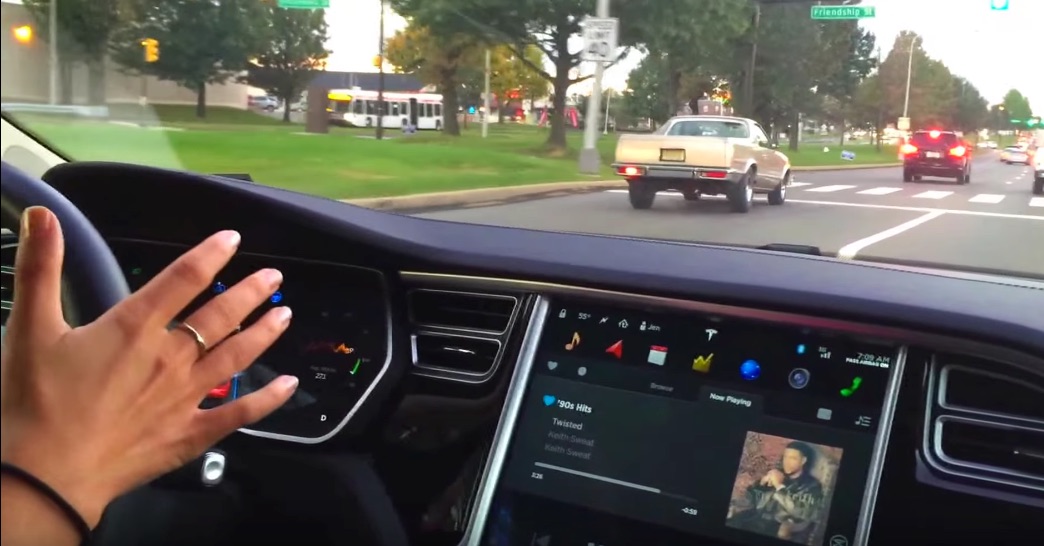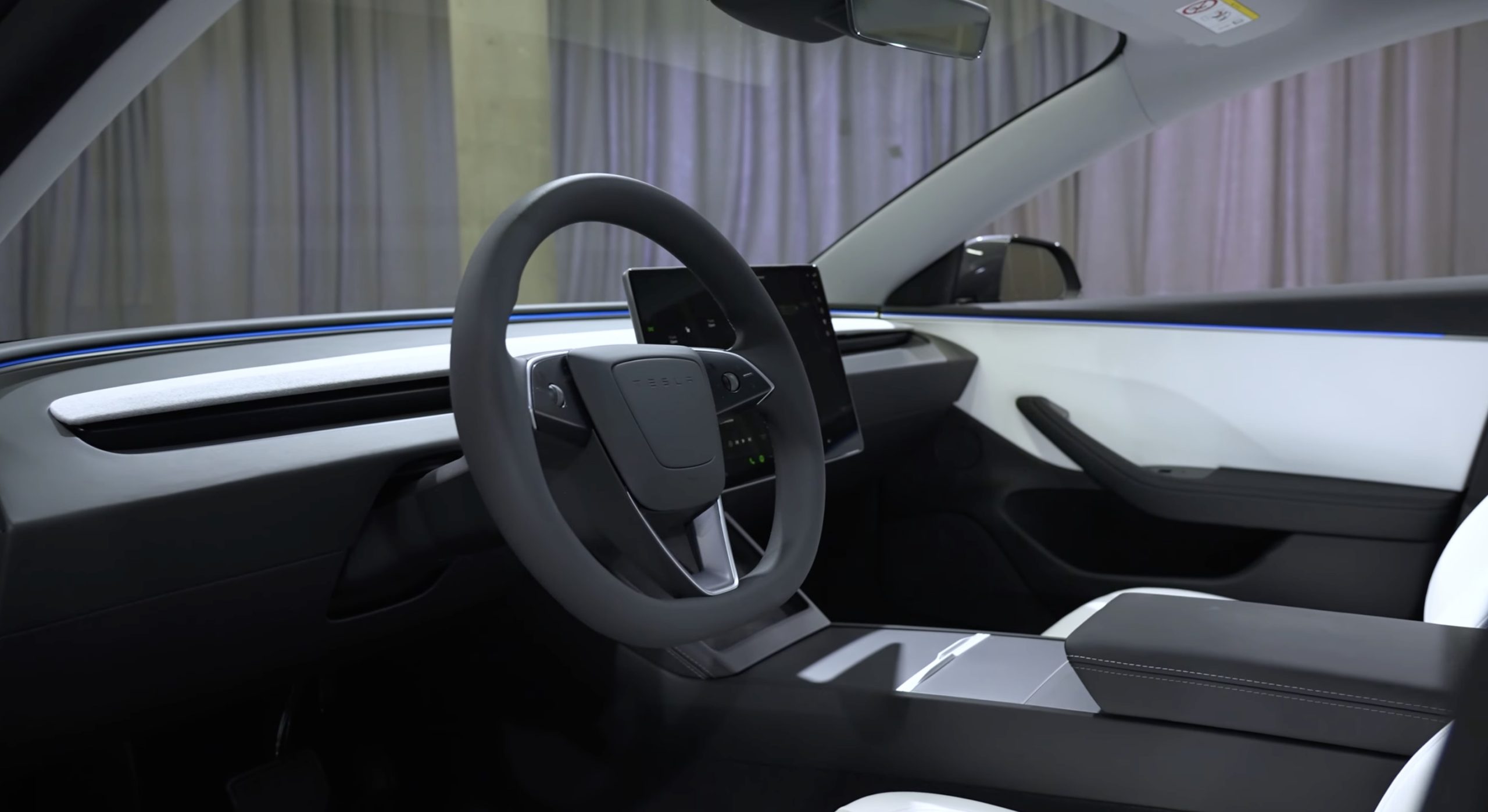

News
Tesla pits human vs. computer while cars operate in ‘Shadow Mode’
No one doubts that Elon Musk wants Tesla to be the first car company to offer fully autonomous cars to the public. After last night’s announcement that second generation Autopilot hardware, with 8 cameras and 40x more powerful computer, is now included in every car built at the Fremont factory, the question is not if Tesla will be first to market with self driving cars, but when.
As noted by white hat hacker Jason Hughes, it took a year for Tesla to activate the first version of Autopilot after the hardware was first added to production cars. New Tesla vehicles with self-driving hardware will likely see the same timeline before their vehicles become fully autonomous. But why?
I find it strange that @TeslaMotors is going to ship another #autopilot that doesn't actually work on day 1. Year wait for AP1.0 software…
— Jason Hughes (@wk057) October 20, 2016
Remember, Tesla has gotten some push back on its Autopilot system since Joshua Brown was killed on a Florida highway last May. German regulators recently sent a letter to all Tesla owners warning them that Autopilot is not a self-driving system and they must always pay close attention to their driving. The California DMV has proposed regulations that would prohibit Tesla or any other company from using the words “self driving” or “auto-pilot” in company literature.
Until this point, Tesla has been free to operate Autopilot in beta mode. Regulators have deemed it to be little more than a “super cruise control” feature. But before Tesla can activate a system that purports to offer true Level 5 autonomy, it will need to convince regulators that the system functions as advertised and is safe not only for Tesla owners but for all members of the public. That is going to require data — massive amounts of data.
New Tesla Model S and Model X automobiles will run Autopilot in “shadow mode” and collect driving data that pits a human versus computer. Autopilot vehicles running in shadow mode will not take any driving-assist or self-driving actions. Rather they will only log instances when Autopilot would have taken action and compare those results to the real life actions taken by human drivers. Musk told the press that the ultimate goal is to improve its self-driving algorithms until they are better than human drivers. By having statistical data to back up the safety of its self-driving model, Tesla will have a better chance of proving to regulators that its vision for a Tesla-powered autonomous future will be safer for humanity.
However, experts in the field of autonomous driving say billions of miles of driving will be needed to verify the validity and safety of self-driving systems. Tesla now has collected approximately 220 million miles worth of data collected from Autopilot-equipped vehicles. As Tesla wirelessly adds millions more miles of driving data collected through previous generation and new ‘Enhanced Autopilot’ enabled vehicles, the company will take a commanding lead over the rest of the automotive and transportation services industry that is just beginning to understand what the future will look like.
For Tesla owners whose cars are manufactured on or after October 19, 2016 — which will include all Model 3 sedans — they will have the satisfaction of knowing their car is capable, as Elon suggests, of driving from Los Angeles to New York City without any input from the driver, then navigating New York traffic, finding a parking spot, and parking itself all without input from a human driver. It couldn’t be a better time to be a Tesla owner, especially if you care about shaping the inevitable future.

Elon Musk
Tesla CEO Elon Musk announces major update with texting and driving on FSD
“Depending on context of surrounding traffic, yes,” Musk said in regards to FSD v14.2.1 allowing texting and driving.

Tesla CEO Elon Musk has announced a major update with texting and driving capabilities on Full Self-Driving v14.2.1, the company’s latest version of the FSD suite.
Tesla Full Self-Driving, even in its most mature and capable versions, is still a Level 2 autonomous driving suite, meaning it requires attention from the vehicle operator.
You cannot sleep, and you should not take attention away from driving; ultimately, you are still solely responsible for what happens with the car.
The vehicles utilize a cabin-facing camera to enable attention monitoring, and if you take your eyes off the road for too long, you will be admonished and advised to pay attention. After five strikes, FSD and Autopilot will be disabled.
However, Musk announced at the Annual Shareholder Meeting in early November that the company would look at the statistics, but it aimed to allow people to text and drive “within the next month or two.”
He said:
“I am confident that, within the next month or two, we’re gonna look at the safety statistics, but we will allow you to text and drive.”
“I am confident that, within the next month or two, we’re gonna look at the safety statistics, but we will allow you to text and drive.”
Does anyone think v14.3 will enable this? pic.twitter.com/N2yn0SK70M
— TESLARATI (@Teslarati) November 23, 2025
Today, Musk confirmed that the current version of Full Self-Driving, which is FSD v14.2.1, does allow for texting and driving “depending on context of surrounding traffic.”
Depending on context of surrounding traffic, yes
— Elon Musk (@elonmusk) December 4, 2025
There are some legitimate questions with this capability, especially as laws in all 50 U.S. states specifically prohibit texting and driving. It will be interesting to see the legality of it, because if a police officer sees you texting, they won’t know that you’re on Full Self-Driving, and you’ll likely be pulled over.
Some states prohibit drivers from even holding a phone when the car is in motion.
It is certainly a move toward unsupervised Full Self-Driving operation, but it is worth noting that Musk’s words state it will only allow the vehicle operator to do it depending on the context of surrounding traffic.
He did not outline any specific conditions that FSD would allow a driver to text and drive.
News
Tesla Semi just got a huge vote of confidence from 300-truck fleet
The confidential meeting marks a major step for the mid-sized carrier in evaluating the electric truck for its regional routes.

The Tesla Semi is moving closer to broader fleet adoption, with Keller Logistics Group wrapping up a key pre-production planning session with the electric vehicle maker’s team this week.
The confidential meeting marks a major step for the mid-sized carrier in evaluating the electric truck for its regional routes.
Keller’s pre-production Tesla Semi sessions
Keller Logistics Group, a family-owned carrier with over 300 tractors and 1,000 trailers operating in the Midwest and Southeast, completed the session to assess the Tesla Semi’s fit for its operations. The company’s routes typically span 500-600 miles per day, positioning it as an ideal tester for the Semi’s day cab configuration in standard logistics scenarios.
Details remain under mutual NDA, but the meeting reportedly focused on matching the truck to yard, shuttle and regional applications while scrutinizing economics like infrastructure, maintenance and incentives.
What Keller’s executives are saying
CEO Bryan Keller described the approach as methodical. “For us, staying ahead isn’t a headline, it’s a habit. From electrification and yard automation to digital visibility and warehouse technology, our teams are continually pressure-testing what’s next. The Tesla Semi discussion is one more way we evaluate new tools against our standards for safety, uptime, and customer ROI. We don’t chase trends, we pressure-test what works,” Keller said.
Benjamin Pierce, Chief Strategy Officer, echoed these sentiments. “Electrification and next-generation powertrains are part of a much broader transformation. Whether it’s proprietary yard systems like YardLink™, solar and renewable logistics solutions, or real-time vehicle intelligence, Keller’s approach stays the same, test it, prove it, and deploy it only when it strengthens service and total cost for our customers,” Pierce said.
News
Tesla extends FSD Supervised ride-alongs in Europe by three months
Needless to say, it does appear that FSD fever is starting to catch in Europe.

Tesla appears to be doubling down on its European Full Self-Driving (Supervised) push, with the company extending its demo ride-along program by three months until the end of March 2026. The update seems to have been implemented due to overwhelming demand.
Needless to say, it does appear that FSD fever is starting to catch in Europe.
Extended FSD demonstrations
Tesla EU Policy and Business Development Manager Ivan Komušanac shared on LinkedIn that the company is offering ride-along experiences in Germany, France and Italy while working toward FSD (Supervised) approval in Europe.
He noted that this provides a great feedback opportunity from the general public, encouraging participants to record and share their experiences. For those unable to book in December, Komušanac teased more slots as “Christmas presents.”
Tesla watcher Sawyer Merritt highlighted the extension on X, stating that dates now run from December 1, 2025, to March 31, 2026, in multiple cities including Stuttgart-Weinstadt, Frankfurt and Düsseldorf in Germany. This suggests that the FSD ride-along program in Europe has officially been extended until the end of the first quarter of 2026.
Building momentum for European approval
Replies to Merritt’s posts buzzed with excitement, with users like @AuzyMale noting that Cologne and Düsseldorf are already fully booked. This sentiment was echoed by numerous other Tesla enthusiasts on social media. Calls for the program’s expansion to other European territories have also started gaining steam, with some X users suggesting Switzerland and Finland as the next locations for FSD ride-alongs.
Ultimately, the Tesla EU Policy and Business Development Manager’s post aligns with the company’s broader FSD efforts in Europe. As per recent reports, Tesla recently demonstrated FSD’s capabilities for Rome officials. Reporters from media outlets in France and Germany have also published positive reviews of FSD’s capabilities on real-world roads.








